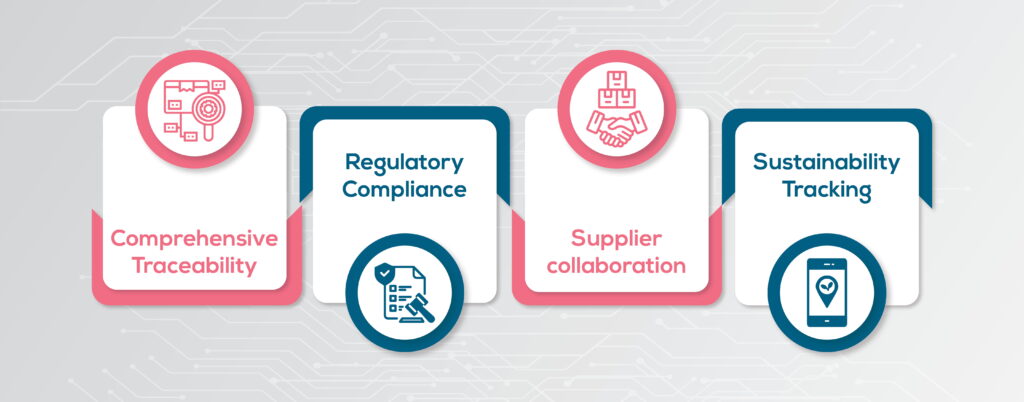Picture this: A warehouse full of fresh produce, refrigerated goods, and packaged products — all moving at lightning speed. Orders are flying in, shipments are heading out, and everything needs to be tracked down to the last batch number. In food manufacturing, managing your inventory isn’t just about counting boxes — it’s about staying one step ahead, always.
To keep pace, companies are turning to digitally-connected warehouse and inventory systems — blending smart tech with real-time data to make operations smoother, safer, and scalable. Whether you’re juggling short shelf lives or strict compliance standards, going digital helps connect the dots from supplier to shelf.
Why Go Digital?
Traditional warehouse systems often rely on manual processes, leading to errors, delays, and increased costs. Digitally-connected systems offer:
- Real-time inventory tracking: Know exactly what’s in stock, where it is, and when it expires.
- Enhanced traceability: Track products from farm to fork, ensuring transparency and safety.
- Improved compliance: Easily adhere to food safety standards with automated documentation.
- Operational efficiency: Streamline processes, reduce waste, and respond swiftly to market changes.
Key Components of a Digitally-Connected Warehouse

1. Smart Inventory Management
Modern inventory systems go beyond simple stock counts. They offer:
- Batch and lot tracking: Monitor products by specific batches, crucial for recalls or quality checks.
- Expiry date alerts: Automatically flag products nearing their expiration, reducing waste.
- Automated reordering: Set thresholds to reorder stock before it runs out.
For instance, platforms like Farm to Plate provide real-time inventory visibility, ensuring that food manufacturers can manage their stock efficiently and reduce spoilage.
2. IoT and Sensor Integration
Integrating Internet of Things (IoT) devices allows for:
- Environmental monitoring: Track temperature and humidity to ensure optimal storage conditions.
- Equipment performance: Monitor machinery to predict maintenance needs and prevent downtime.
- Asset tracking: Use RFID tags to locate products quickly within the warehouse.
3. Seamless ERP Integration
Connecting warehouse systems with Enterprise Resource Planning (ERP) software ensures:
- Unified data: Keep all departments informed with consistent, real-time information.
- Improved forecasting: Use historical data to predict demand and adjust inventory accordingly.
- Streamlined operations: Automate processes from procurement to sales.
Enhancing Operations with Farm to Plate

While many systems offer digital solutions, Farm to Plate stands out by catering specifically to the food industry’s unique challenges. Here’s how:
- Comprehensive traceability: From sourcing raw materials to delivering finished products, F2P ensures every step is documented and accessible.
- Regulatory compliance: Automatically generate reports and maintain records to meet food safety standards.
- Supplier collaboration: Facilitate communication and data sharing with suppliers for better coordination.
- Sustainability tracking: Monitor and report on sustainability metrics, helping companies meet environmental goals.
By integrating F2P into their operations, food manufacturers can not only improve efficiency but also build trust with consumers by ensuring product safety and transparency.
Benefits of a Digitally Connected System
Implementing a digital warehouse and inventory system offers numerous advantages:
- Reduced errors: Automation minimizes human mistakes in data entry and order processing.
- Cost savings: Efficient operations lead to lower labor and storage costs.
- Faster response times: Quickly adapt to changes in demand or supply chain disruptions.
- Enhanced customer satisfaction: Accurate orders and timely deliveries improve customer trust and loyalty.
Getting Started
Transitioning to a digitally-connected system might seem daunting, but with the right approach, it’s manageable:
- Assess current operations: Identify pain points and areas for improvement.
- Set clear goals: Define what you want to achieve—be it reduced waste, improved compliance, or faster order fulfillment.
- Choose the right technology: Select systems that align with your objectives and integrate well with existing tools.
- Train your team: Ensure staff are comfortable with new technologies through comprehensive training.
- Monitor and adjust: Regularly review performance metrics and make necessary adjustments.
Conclusion
Incorporating digital solutions into warehouse and inventory management is no longer optional for food manufacturers—it’s essential. By embracing technologies like Farm to Plate, companies can enhance efficiency, ensure compliance, and meet the increasingly demanding market requirements. The journey to a digitally connected warehouse may require effort, but the rewards in terms of operational excellence and customer satisfaction are well worth it.
Interested in learning more about how Farm to Plate can transform your operations? Contact us for a demo and see the difference firsthand.
Sravya Priya, Content Marketing Specialist at farmtoplate.io
